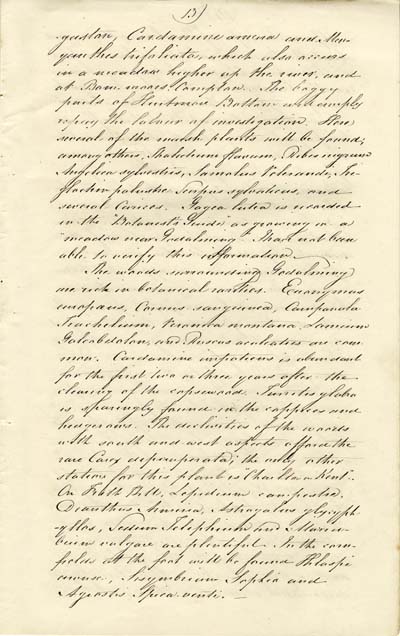-gaston, Cardamine amara and Men-
yanthes trifoliata, which also occurs
in a meadow higher up the river; and
at Bom-moors, Compton. The boggy
parts of Hurtmore Bottom will amply
repay the labour of investigation. Here
several of the marsh plants will be found;
among others, Thalictrum flavum, Ribes nigrum,
Angelica sylvestris, Samolus Valerandi, Tri-
glochin palustre, Scirpus sylvaticus, and
several carices. Gagea lutea is recorded
in the “Botanists Guide” as growing in a
“meadow near Godalming.” I have not been
able to verify this information.
The woods surrounding Godalming
are rich in botanical rarities. Euonymus
europaeus, Cornus sanguinea, Campanula
Trachelium, Veronica Montana, Lamium
Galeobdolon and Ruscus aculeatus are com-
mon. Cardamine impatiens is abundant
for the first two or three years after the
clearing of the copsewood. Turritis glabra
is sparingly found in the coppices and
hedgerows. The declivities of the woods
with south and west aspects afford the
rare Carex depauperata; the only other
station for this plant is “Charlton, Kent.”
On Frith Hill, Lepidium campestre,
Dianthus Ameria, Astragalus glycyph-
yllos, Sedum Telephium and Marru-
bium vulgare are plentiful. In the corn-
fields at the will be found Thlaspi
arvense, Sisymbrium Sophia and
Agrostis Spica-venti.
|





